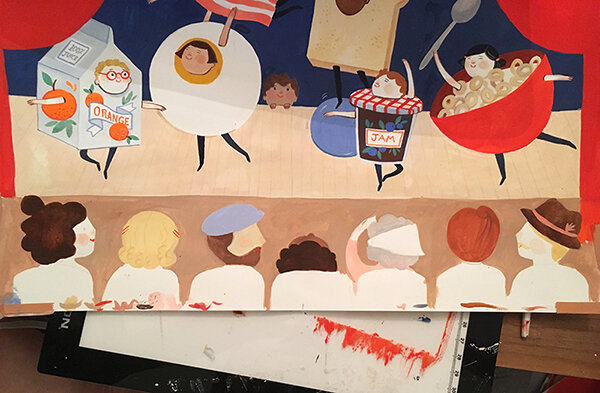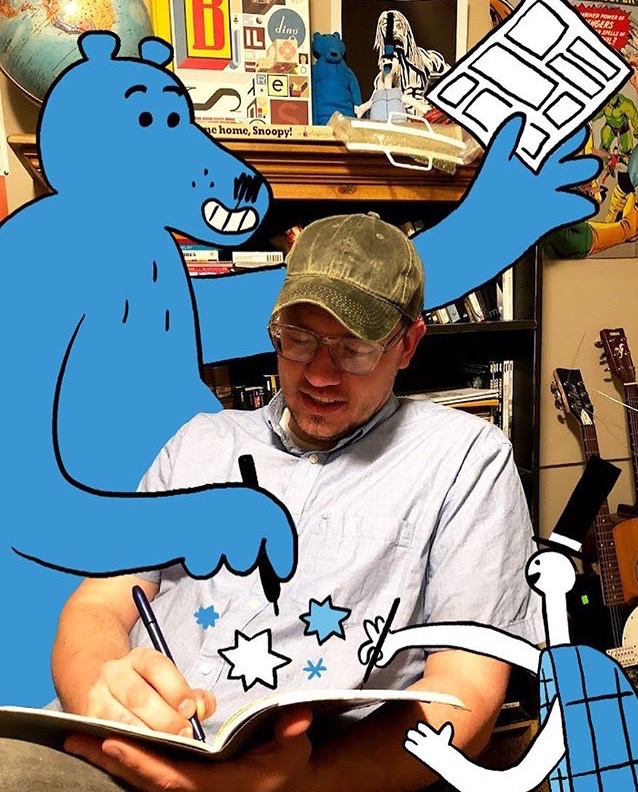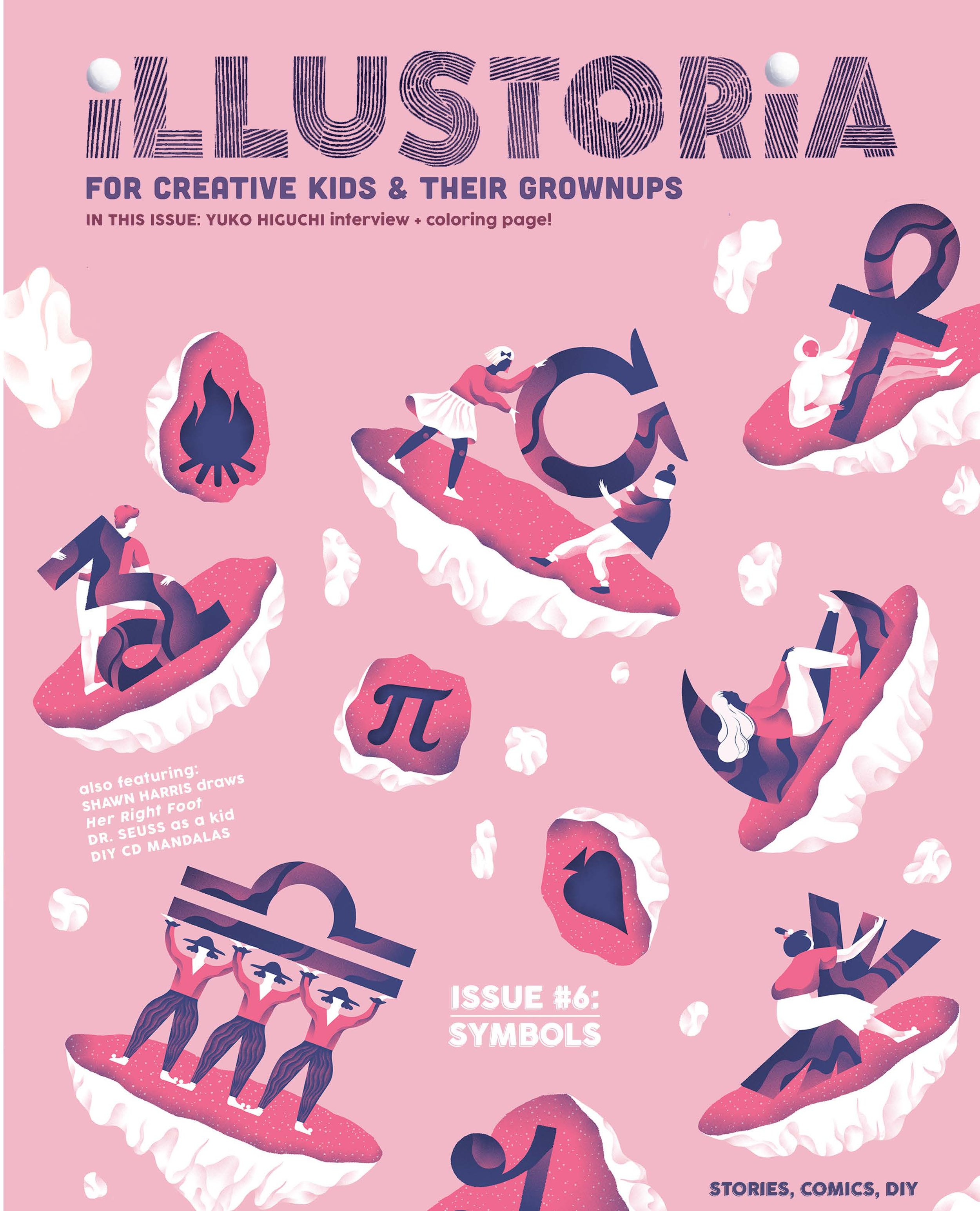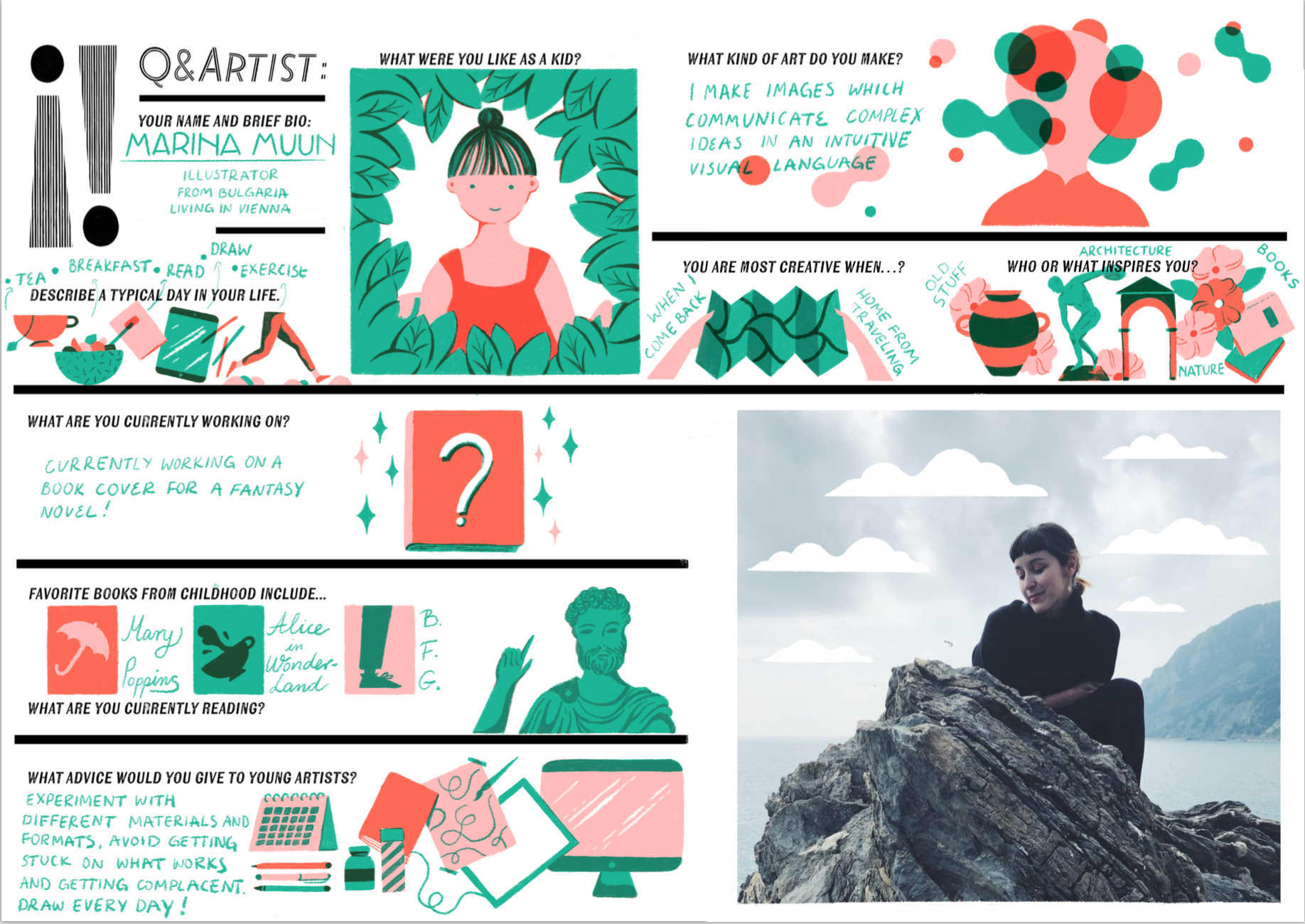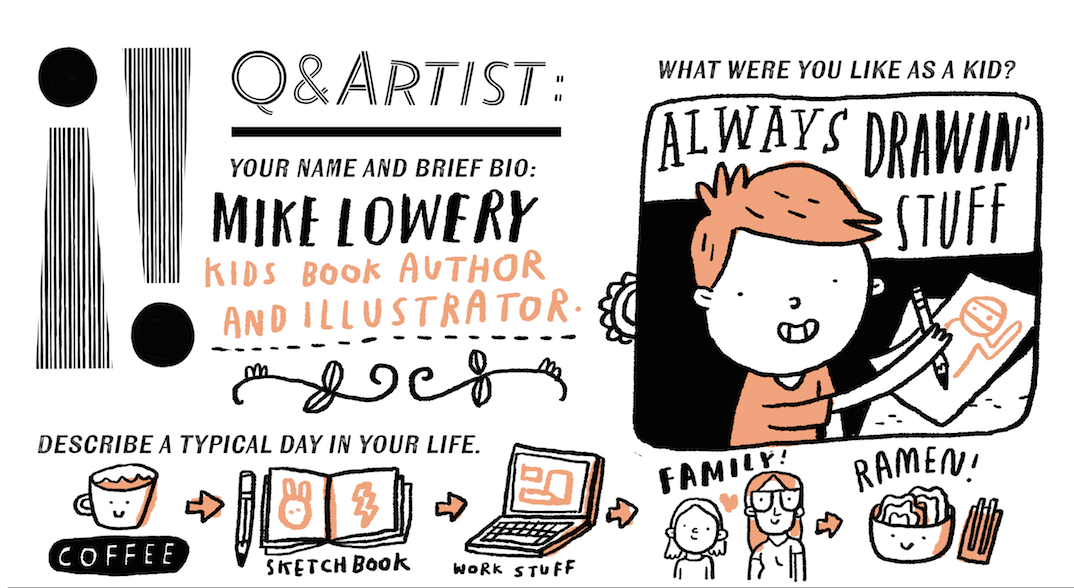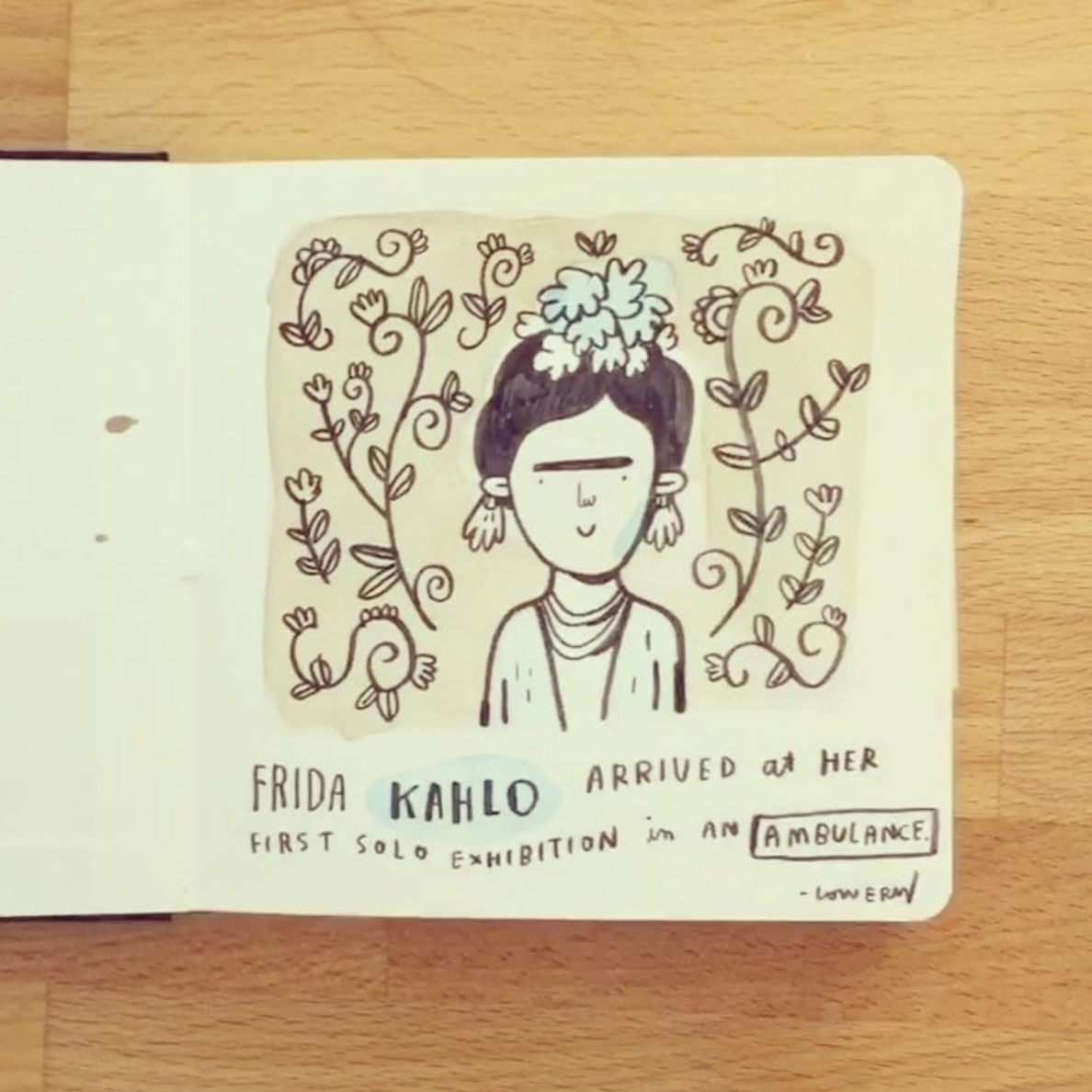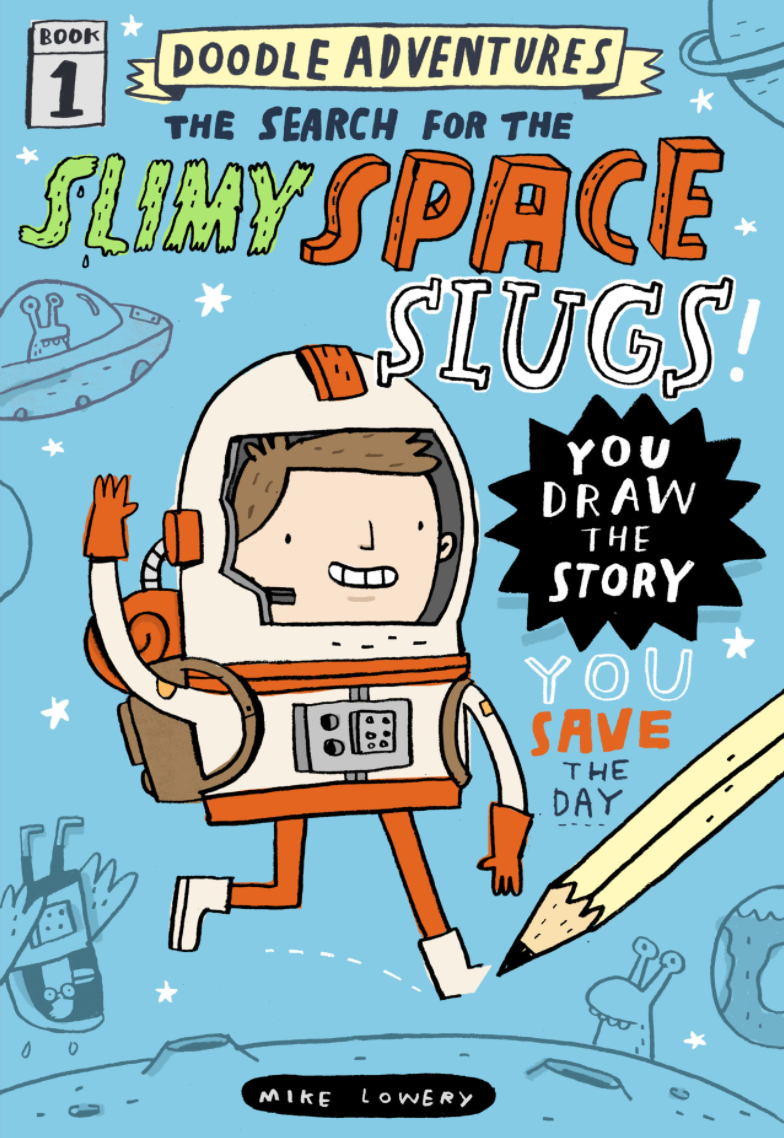Interview with Isabelle Arsenault & Mac Barnett, Creators of Just Because
What kinds of things do you think about right before bed? Do you wonder what happened to the dinosaurs? Do you think about the day to come? Or do you perhaps fall right asleep and let your subconscious do the pondering? Nighttime musings nourish the inquisitive mind in Just Because, a question-filled bedtime story that draws readers into a wondrous space between wakefulness and sleep.
Just Because invites readers into the familiar, shadowy scape of a bedroom at night as a youngster prepares to go to sleep, and then into the wild world of her imagination. Flourishing with color, creatures, and familiar objects in unexpected places, these swirling scenes accompany a father’s clever responses to her endless questions. The result is a story that raises as many questions as it answers, and encourages us to seek answers in our dreams and imaginations.
It was our pleasure and privilege to interview the duo behind this dreamy collaboration: writer and Caldecott medalist Mac Barnett, and illustrator of the award-winning Jane, the Fox and Me, Isabelle Arsenault. We got to ask them about working together, their creative inspiration, and all the questions on our minds after reading their book!
Just Because- Art by Isabelle Arsenault, Words by Mac Barnett.
1. Some illustrations in this book are really colorful, and others are more shadowy and monochrome. How did you use color to help tell the story?
Isabelle: I associated a different colour to each of the questions in the book, creating a visual link between questions and answers. The question-pages are dimmer, as the light is turned down in the little girl’s bedroom, and the only colour is this big bold circle featuring her question addressed to her dad. The next page is her dad’s answer-spread where the same colour is used differently throughout the spread, with more nuancing and details. At the end of the book, colours are used in another way that breaks this convention, and brings the story to a more poetic level.
Mac: It makes sense that we read stories at bedtime. Stories are about crossing thresholds—between reality and fiction, between our experience and someone else’s. And bedtime is a liminal space—the threshold between waking and sleeping. I like these in-between spaces. When we’re more uncertain, there’s an opportunity to change, to grow, to think new thoughts.
sketches by Isabelle Arsenault.
2. How did you collaborate to tell this story?
Isabelle: I received Mac’s manuscript along with a suggestion for the layout, and two visual references/inspirations. These were old images from an encyclopedia I think, and right then, I felt we were on the same page with this book.
Mac: As a writer I prefer asking questions, as a civilian I prefer answering them. A lot of my stories pose questions. Figuring out what you think about a text can be hard work, but it’s one of the great pleasures of reading, and I’d never want to take that away from kids.
Just Because- Art by Isabelle Arsenault, Words by Mac Barnett.
3. What was your process for creating the other-worldly scenes in this story?
Isabelle: The Q&A style of this manuscript reminded me of the science documentary series I use to read (and loved) as I kid. I felt inspired by this cold factual form and liked the way it contrasted with the content, somehow. The little girl’s questions are serious, but the answers her father makes up are absurd and funny. I thought representing these seriously was perfect. So I worked with a realistic approach, trying to make these senseless images believable.
Mac: Isabelle is one of my favorite illustrators working today, and I’ve been wanting to make a book with her for almost ten years. In the manuscript for Just Because, I noted that the story alternates between a child’s room and the fantastic landscape’s described by her father, but that’s all. Once I handed my words off to Isabelle, the story belonged to her. And because she is a great illustrator, she added so much to this book, including a lovely arc between father and daughter that’s told only by their poses from picture to picture.
Isabelle Arsenault’s studio.
4. What sorts of questions do you think about before bed?
Isabelle: Oh, l’m the doubtful person type, always wondering if I’m doing the right thing... What will be my next book? Will it be good enough? Will kids like it? What if I fail?... What other job could I do?... etc. That sort of funny questions.
Mac: I fall asleep so fast, pretty much the moment I lie down.
Just Because sketches by Isabelle Arsenault.
Just Because can be found in Illustoria’s Issue 10: Color’s On Our Bookshelf feature, which is available to order now. You can also find it at bookstores and libraries across the country. Many thanks to Candlewick for helping sponsor this issue and for this interview opportunity.
















